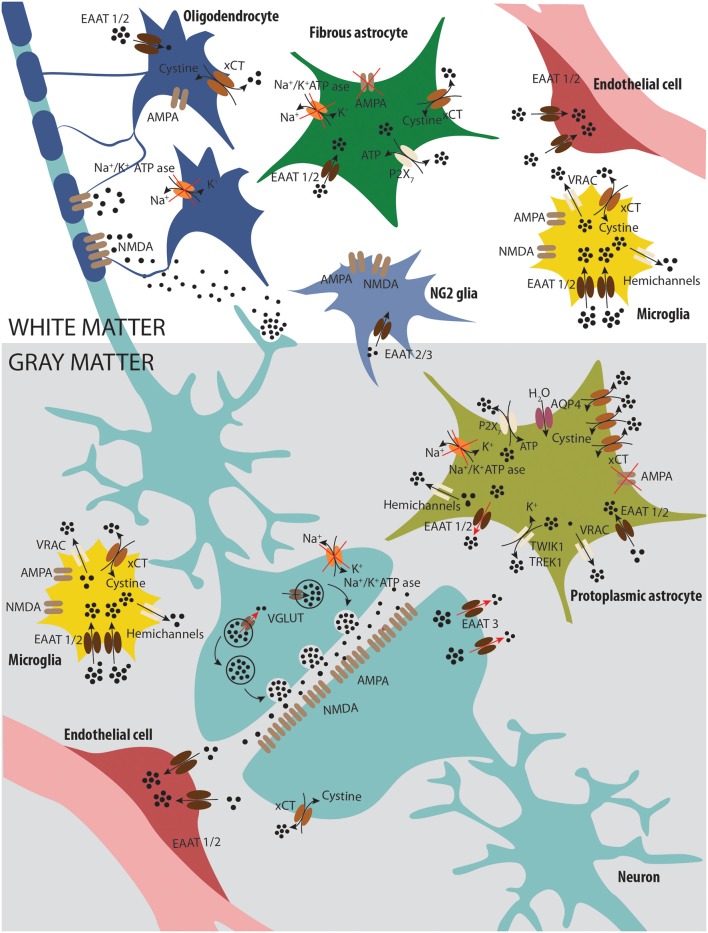Figure 3.
Various cell types in white and gray matter are hives of activity during ischemia-induced glutamate excitotoxicity. The scheme shows the main mechanisms that maintain or disrupt the homeostasis of glutamate (black dots) under ischemic conditions in white and gray matter. The location of individual receptors and transporters, as well as the direction of glutamate fluxes (arrows) in ischemia, are also depicted. In gray matter, glutamate is mainly released either from vesicles or via the reversal of glutamate transporters of neurons and astrocytes. The efflux through transporters is a result of Na+/K+ ATPase inhibition and subsequent collapse of the ion gradients. Since the operation of vesicular glutamate transporters (VGLUTs) depends on H+ ATPase activity, vesicles lose their glutamate upon adenosine triphosphate (ATP) depletion. The compromised astrocytic uptake of glutamate may be partially compensated by the activity of microglial and endothelial EAATs. Astrocytes and microglia also contribute to the excess of extracellular glutamate by overexpressing cystine/glutamate antiporters. Other contributors to the glutamate release were identified on the astrocytes, and comprise hemichannels, and TREK and TWIK channels. Swelling of astrocytes due to the activity of AQP4 channels, resulting in brain edema, opens VRACs that release glutamate to the extracellular space (ECS). The means of glutamate release in white matter differ from those identified in gray matter. Excitotoxicity is not enhanced by the reversal glutamate uptake, but via vesicular release from axons, which results in cytotoxic overactivation of myelinic N-methyl-D-aspartate (NMDA) receptors. Higher vulnerability/susceptibility of white matter to ischemia is a consequence of higher expression of AMPA and NMDA receptors on the cells of the oligodendrocytic lineage. Abbreviations: AMPA, α-amino-3-hydroxy-5-methyl-4-isoxazolepropionic acid; AQP4, aquaporin 4; EAAT1-3, excitatory amino acid transporters 1–3; NMDA, N-methyl-D-aspartic acid or N-methyl-D-aspartate; P2X7, ionotropic purinergic receptor 7; TREK1, two-pore-domain background K+ channel; TWIK 1, two-pore-domain K+ channel; VGLUT, vesicular glutamate transporter; VRAC, volume-regulated anion channels; xCT, cystine/glutamate antiporter.

